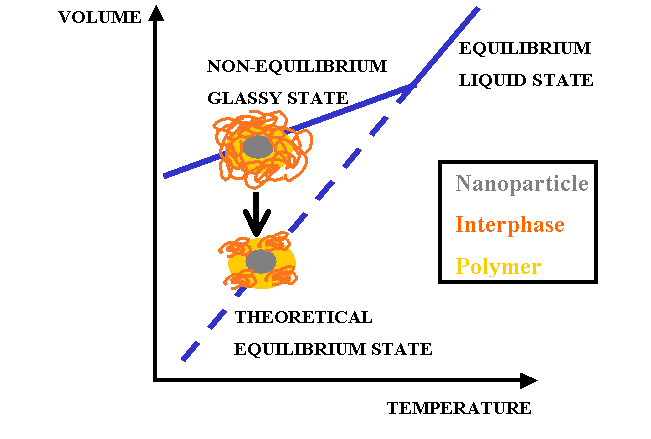Polymer nanocomposites have attracted a great interest in electronics and aerospace industries because of their enhanced electrical and mechanical properties. However, the long-time performance of these nanocomposites is limited by the relaxation process that occurs in the glassy state. This relaxation process is a result of the non-equilibrium state of the glassy polymer. In fact, since glasses are inherently non-equilibrium materials, their physical and mechanical responses properties evolve with time as the material attempts to reach the equilibrium state through configurational rearrangement of polymer segments from frozen to random coil configuration. This is referred to as structural relaxation or physical aging. In this work, we investigate the impact of nanoparticles on the physical aging behavior of polymer nanocomposites using differential scanning calorimetry and sequenced creep experiments. Of particular importance is how the presence of interphases between the nanoparticles and the polymer matrix influence the physical aging or long-time performance of the nanocomposites. Our research results show that the relaxation processes are substantially altered in nanocomposites and also indicate that physical aging studies can be used to quantify the interaction between the filler and the matrix.

Collaborators:
Roger Bradshaw
Frank Fisher